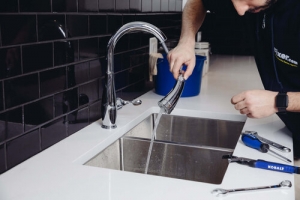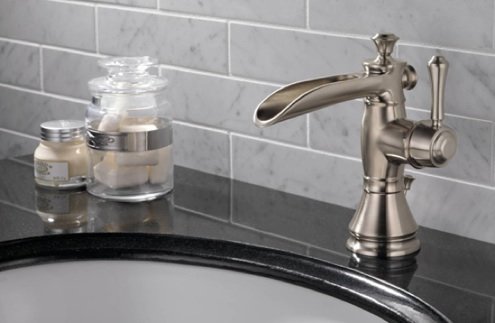In this article underneath you can get a bunch of good expertise all about Water Dripping from Faucet: Why and How to Fix.

Dripping faucets could feel like a minor inconvenience, yet their impact exceeds simply the annoyance of the noise. From wasting water to sustaining unneeded economic costs and wellness threats, neglecting a trickling tap can bring about numerous effects. In this post, we'll explore why it's critical to address this common family problem quickly and efficiently.
Wastage of Water
Ecological Effect
Leaking taps contribute considerably to water wastefulness. According to the Environmental Protection Agency (EPA), a single tap leaking at one drip per secondly can squander greater than 3,000 gallons of water each year. This not only stress water sources yet also impacts communities and wildlife based on them.
Financial Expenses
Increased Water Expenses
Beyond the environmental impact, leaking faucets can blow up water expenses considerably. The accumulated wastefulness with time translates right into greater energy costs, which might have been prevented with prompt fixings.
Prospective Building Damage
Furthermore, extended trickling can result in damage to components and surface areas surrounding the tap. Water buildup can create staining, corrosion, and also architectural problems if left neglected, causing added repair work expenses.
Health Concerns
Mold and Mold Development
The continuous existence of wetness from a trickling tap creates a suitable setting for mold and mildew and mold development. These fungis not only jeopardize interior air high quality but also posture health and wellness threats, especially for individuals with respiratory system conditions or allergies.
Waterborne Illness
Stationary water in leaking taps can end up being a breeding ground for germs and various other pathogens, increasing the threat of waterborne diseases. Contaminants such as Legionella microorganisms thrive in stagnant water, possibly causing major illnesses when consumed or breathed in.
DIY vs. Professional Repair work
Advantages and disadvantages of DIY Repair Service
While some might attempt to take care of a dripping faucet themselves, DIY fixings include their very own collection of challenges. Without proper understanding and tools, do it yourself efforts can worsen the problem or cause insufficient repair work, extending the problem.
Advantages of Employing an Expert Plumber
Hiring an expert plumber guarantees that the underlying reason for the dripping tap is dealt with successfully. Plumbing technicians have the competence and equipment to detect and fix faucet issues successfully, conserving time and minimizing the threat of further damage.
Step-by-Step Overview to Taking Care Of a Dripping Tap
Devices Required
Prior to trying to fix a trickling tap, gather the required devices, consisting of a flexible wrench, screwdrivers, replacement parts (such as washing machines or cartridges), and plumber's tape.
Common Faucet Issues and Their Solutions
Identify the kind of faucet and the certain concern triggering the drip. Typical troubles include damaged washing machines, corroded shutoff seats, or defective O-rings. Refer to supplier instructions or online tutorials for step-by-step guidance on repairs.
Safety nets
Routine Maintenance Tips
To avoid leaking faucets, perform routine upkeep such as cleaning aerators, examining for leaks, and replacing worn-out parts immediately. Additionally, consider setting up water-saving gadgets or upgrading to much more efficient fixtures.
Importance of Prompt Services
Attending to leaking faucets as soon as they're noticed protects against additional water wastage and possible damages, ultimately conserving both water and cash over time.
Impact on Property Value
Perception of Well-Maintained Property
Preserving a building in good condition, including dealing with upkeep problems like trickling faucets, boosts its regarded worth and desirability among prospective customers or renters.
Impact on Resale Value
Properties with properly maintained plumbing fixtures, consisting of taps, command greater resale values in the realty market. Resolving trickling taps can add to a favorable impact during building evaluations and settlements.
Environmental Obligation
Private Payment to Preservation
Taking duty for fixing trickling taps lines up with wider efforts towards water conservation and ecological sustainability. Every individual's activities collectively make a significant influence on preserving valuable sources.
Sustainable Living Practices
By focusing on prompt repair work and taking on water-saving practices, people add to lasting living techniques that profit both existing and future generations.
Verdict
Addressing a dripping tap goes beyond simple ease; it's a crucial step toward preserving water, lowering financial expenses, and securing health and wellness and residential property. Whether via DIY fixings or professional support, acting to take care of trickling faucets is a small yet impactful way to promote responsible stewardship of sources and contribute to a much healthier, a lot more sustainable future.
How to Fix a Leaky Faucet: Step-by-Step Repair Guide
A leaky faucet may seem like a simple annoyance, but if it's not fixed promptly, that leak could cost hundreds to potentially thousands. From water damage to mold, mildew, and high water bills, even a tiny leak can be catastrophic if left unattended. Damage like this can even affect the overall value of your home, so it's important to take the right approach for leaky faucet repair. You may need the help of a plumber in some cases, but we've got a few tips you can try on how to fix a leaky faucet before calling the pros.
Four Faucet Types
When you're learning how to fix a leaky faucet, the first step is knowing what kind of faucet you're working with! There are four common types.
Cartridge Faucets
Cartridge faucets come in one- or two-handled varieties. In one-handled cartridge faucets, hot and cold water combines in a single cartridge. In the two-handled versions, hot and cold water are controlled separately and mixed in the faucet.
Ball Faucets
Ball faucets have a single lever you push up and down to adjust the pressure and rotate to change the temperature. A slotted metal ball controls the amount of water allowed into the spout.
Compression Washer Faucets
They're the oldest type of faucet, but they're still used in many homes — especially older ones. Compression faucets have two separate handles that, when turned, raise or lower the washer that seals a water valve. This valve stops water from flowing through the faucet when it is turned off.
Disc Faucets
Disc faucets rarely need to be repaired due to their maintenance-free design. The water flow is controlled by two discs — the upper one raises and lowers against a fixed lower disc, creating a watertight seal. If your disc faucet starts leaking, you may need to replace the seals or clean residue buildup from the inlets.
Fixing a Leaky Faucet
Step 1: Turn Off the Water
Whether you're learning how to fix a leaky bathtub faucet or how to fix a leaky kitchen faucet, always turn off the water supply to your working area when you're fixing a leak. The last thing you want is a flood added to your list of things to fix.
Look for the shutoff valves below your sink or around the tub and turn them clockwise to stop the water flow. If your faucet doesn't have shutoff valves, you may need to turn off the water for the whole house. Check to make sure it's off by turning the faucet on. If nothing comes out, you're ready to start the repair.
Step 2: Take Apart the Faucet
How you disassemble your faucet depends on the type of fixture you have. You can use a flathead screwdriver to remove the caps on top of the handle or handles for cartridge and compression faucets. Inside, you should see handle screws. Unscrew these with a screwdriver to remove the handle.
Disc- and ball-style faucets will typically have an inlet screw near the handle, and removing that will reveal the interior of the faucet.
Detach the Valve Stem
For cartridge- and compression-style faucets, you'll see the inner valve stem or cartridge once you remove the faucet handles. If you have a compression faucet, unscrew the brass valve stem. If you have a cartridge faucet, pull out the cartridge. If your cartridge has been in place for a while, it may require some tools or extra force to remove it due to mineral deposits.
Examine and Replace Parts
Once you've removed the parts, check them out to confirm what needs to be replaced. You may see corroded rubber washers, O-rings, stems, or cartridges. On a ball-style faucet, check the seats and springs for damage.
If you need to repair a leaky disc faucet, check the inlet and seals on the lower disc.
Once you determine what parts must be replaced, visit your local hardware store. Bring the damaged parts with you to ensure you can purchase the correct components to replace them.
Clean Valves and Faucet Cavity
If you've removed a stem or cartridge, you may notice mineral buildup in the faucet's threads. Use white vinegar to clean the valve seat by soaking it for a few minutes, then scrub it away with a soft toothbrush and rinse with warm water. You can also clean the interior of the faucet in the same way.
Reassemble the Faucet
Once your faucet is cleaned and the required parts have been replaced, it's time to reassemble it. Put the pieces back together and slowly turn the water supply back on. Doing this slowly is crucial because too much initial water pressure can damage the new hardware you've just installed.
https://homewarranty.firstam.com/blog/how-to-fix-leaky-faucet

We had been brought to that write-up on Why Is It Important To Fix Your Leaking Tap/Faucet? from a friend on another web blog. So long as you enjoyed reading our article plz consider to pass it around. Thank you for going through it.